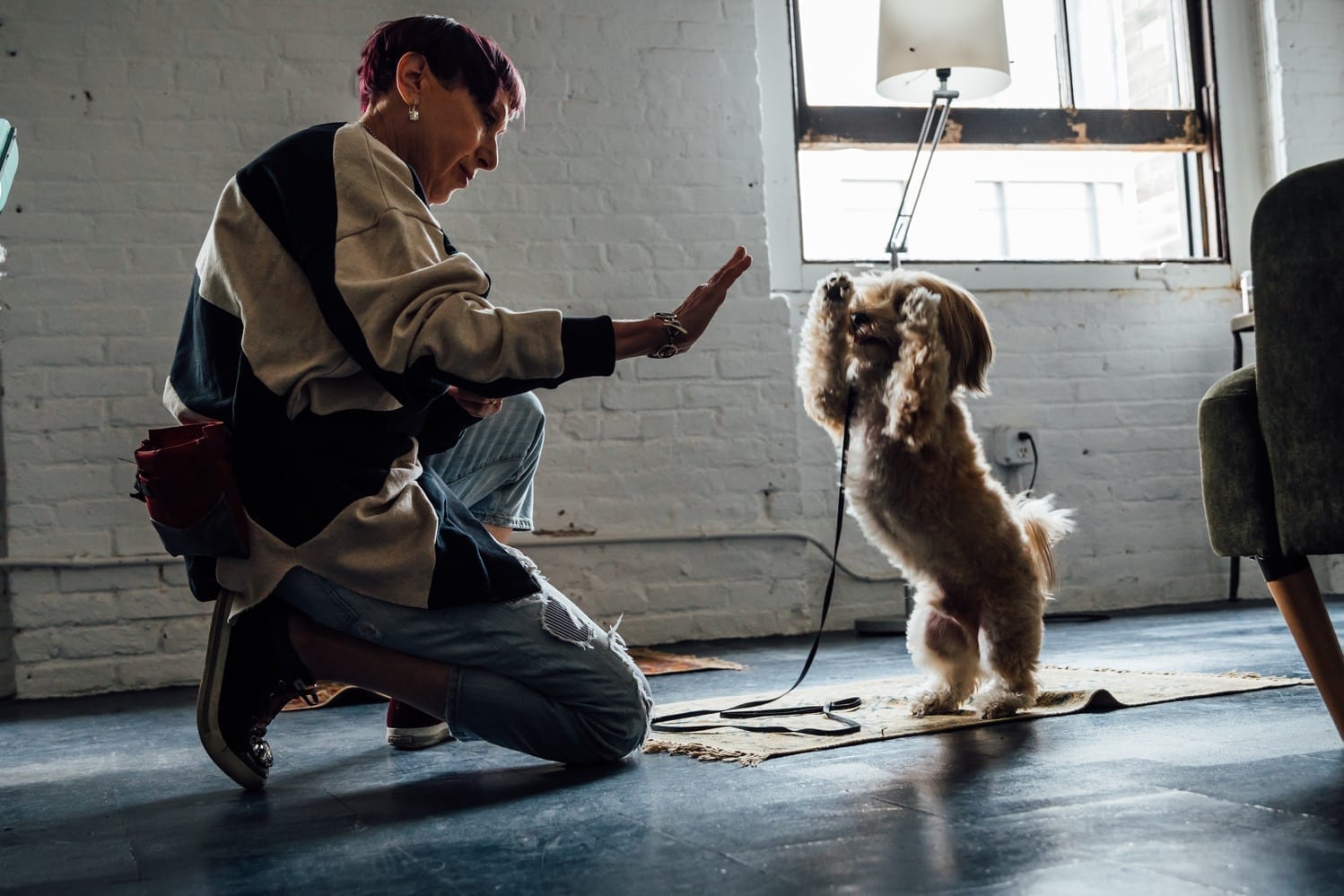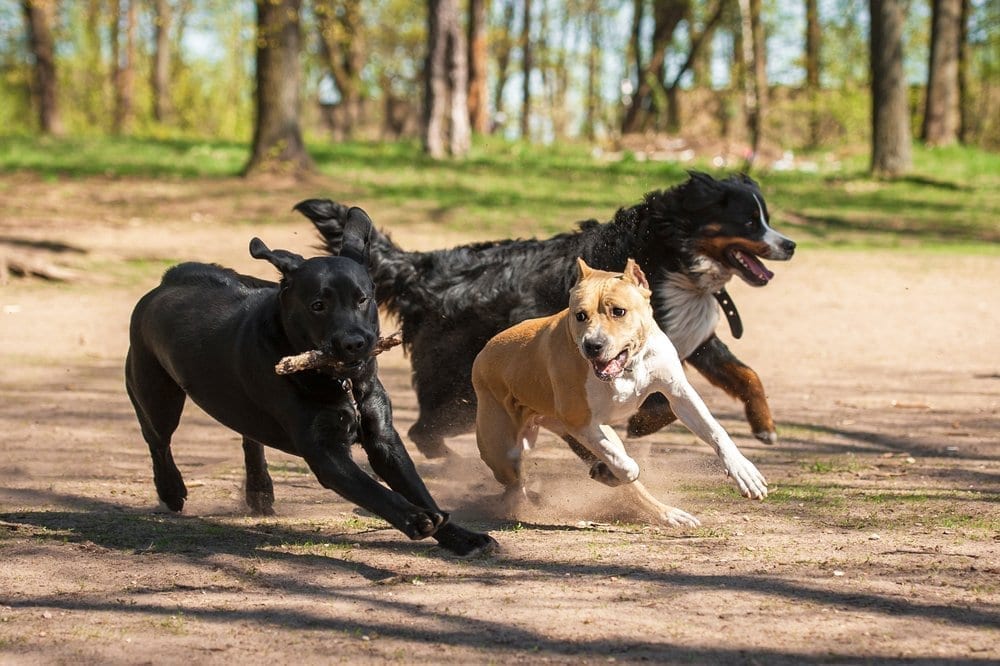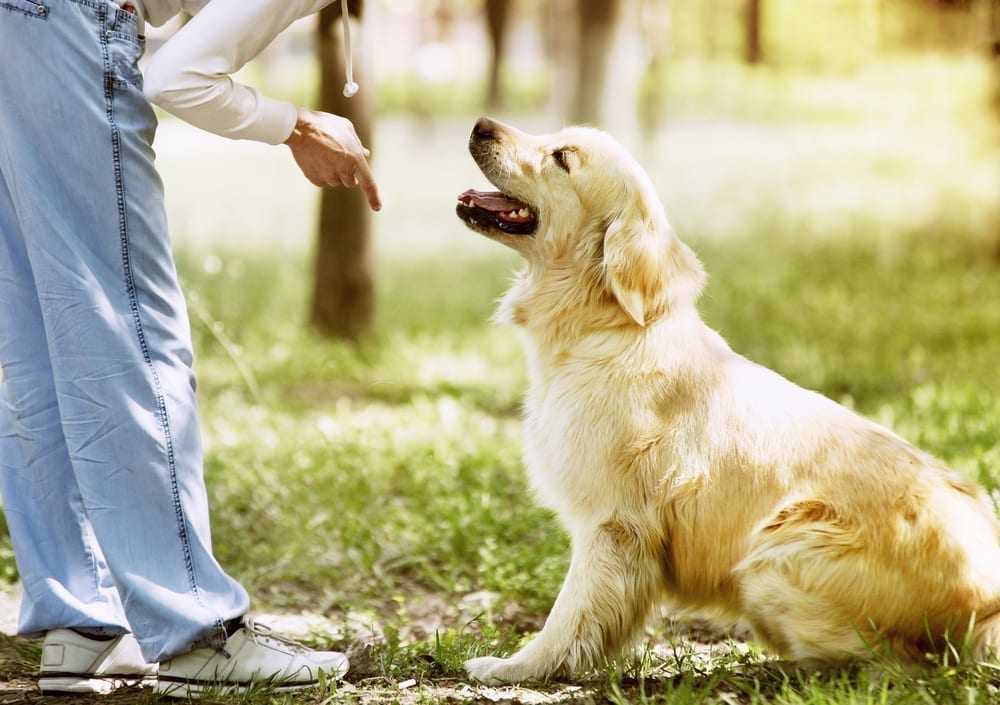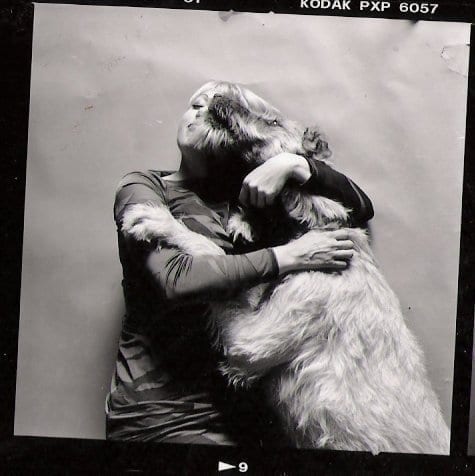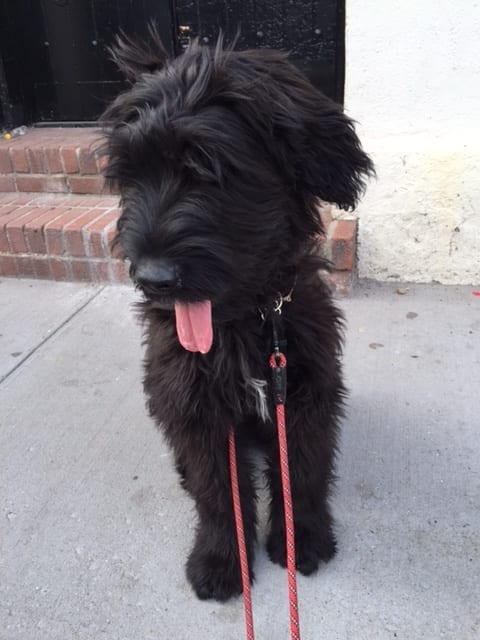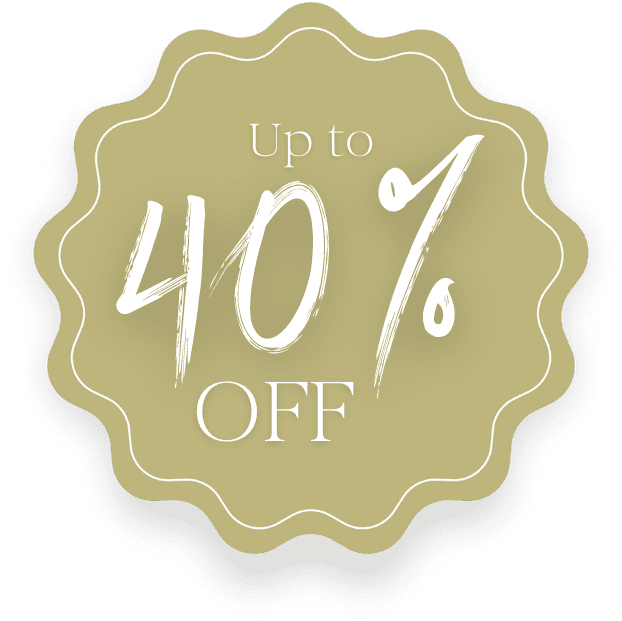Let’s be practical here. As much as you would like to shape behaviors but not force the dog by molding or yanking (an example for molding would be: putting the dog into a sit position by pressing on his butt until the butt hits the floor) or teaching a sit stay by yanking on the leash when the dog gets up prematurely sometimes the leash can be an aid.
Just by limiting the amount of movement you can inform the dog that what you want is going to be happening right here and not at the other end of the room.
I just watched a lecture by Michele Pouliot about teaching collar touches. It is a a tool she uses to teach seeing eye dogs but also her freestyle dogs. I was so happy to see it because I have relied on leashes myself to get certain kinds of behaviors but feeling kind of like a control freak, since most positive reinforcement trainers kind of shun the leash. Also I was puzzled as to how you EVER free shape some of those moves in freestyle where luring can be messy and awkward.
She provided food for thought and relief.
Using the leash for information is quite a different ball of wax.
I often show clients how to teach a dog to settle down without doing anything but stepping on a leash applying a fixed and very mild pressure downward to teach the dog to settle on the floor. Rather than nagging, confusing or asking the dog to follow directions that are verbal and poorly understood: the leash provides a calm and simple touch signal that the dog can follow .
The slight downward pressure does provide a slight annoyance but will be greatly outweighed by the rewards the dog receives as soon as he is plopped down on the floor.
The same is true for loose leash walking. Rewarding the dog for releasing the pressure will quickly teach the dog where we want the dog to be in relationship to us.
In many cases when free shaping a behavior is a stretch and might and will cause frustration in the dog and you: don’t shun the leash. Sure, it is wonderful to wait until the dog offers a behavior, or at least part of a behavior we want to teach. But sometimes it is not efficient. And if it is frustrating that is at least as negative an experience for the dog and you as a slight directional hint from a leash.
Quite often I see clients giving me this completely incredulous look when I suggest they keep their dog or puppy on a leash inside the house. It is a great management tool. You can prevent unwanted behaviors from happening and it also prevents inadvertent reinforcement of nuisance behaviors. For example if your puppy loves to steal your favorite new shoes and dive under the couch to demolish them there, not only are you going to be frustrated that this is happening but you are going to be giving that behavior an inordinate amount of attention (commenting, yelling no, throwing yourself on the floor, chasing the puppy who is much faster than you) and with those actions actually contributing to the exciting nature of the misbehavior.What you are really doing is reinforcing that kind of behavior. If you had a leash on the pup you could rescue your shoes without much ado and give the puppy something appropriate to chew. End of story.
Does it impinge on the puppy’s freedom? Sure it does but that is not a bad thing at all. Remember that freedom equals responsibility and if your dog has too much, meaning too many choices, the chance that “errors’ will be made are much higher than if there are only one or two choices.
The gist of what I am trying to say here is that the leash is a tool that is very helpful and can be used in a positive and gentle way.






